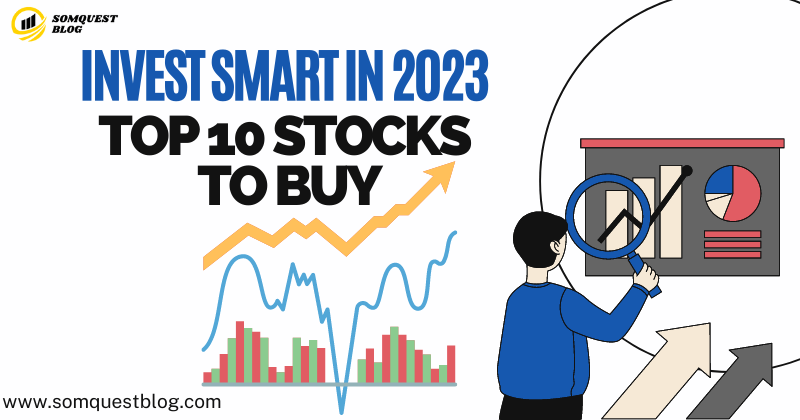If you want to start day trading, choosing the right platform is key. The best day trading platform is one that is easy to use, offers real-time data, and has low fees to help you trade smarter. Using a day trading simulator can also help you practice without risking money.
Robinhood is popular for day trading because it offers commission-free trades and a simple interface. Knowing which stocks to pick is just as important as the platform, so learning about the best day trading stocks is part of your success.
If you’re new, Day Trading for Dummies can be a good guide. It covers the basics and helps you avoid common mistakes while learning the ropes.
Table of Contents
What Is Day Trading?
Day trading involves buying and selling financial assets within the same trading day. It requires quick decisions, deep market knowledge, and using specific tools to track price changes and timing.
Key Characteristics of Day Trading
Day trading depends on fast action. You need to watch markets closely and use charts or news feeds to decide when to enter or exit trades. Discipline is essential to cut losses and lock in profits quickly.
You use strategies like scalping, momentum trading, or swing trading in very short time frames. Because trades happen rapidly, you often use leverage, which increases both risk and potential reward.
You also need access to a day trading simulator to practice strategies without real money. This is useful if you are starting with guides like day trading for dummies.
Differences Between Day Trading and Other Trading Strategies
Unlike day trading, swing trading or investing means holding stocks for days, weeks, or even years. Those approaches rely on longer trends and less frequent trading, so they involve less stress and fewer fees.
Day trading focuses on short-term gains by exploiting intraday price movements. Long-term strategies focus on overall company value and fundamentals.
Day trading requires more active management, constant market monitoring, and quick decisions. Other strategies might need patience and less time watching the screen.
Choosing the Best Day Trading Platform
To pick the right platform, you need to focus on what tools it offers, how safe your money and data will be, and whether it fits your trading style, especially if you prefer trading on a phone or a computer. These factors will affect your speed, decisions, and security when day trading.
Essential Features to Look For
Look for a platform that offers fast order execution and low fees. When you trade stocks every day, speed matters because market prices change quickly. Also, check if the platform has real-time charts and news updates. These tools help you spot trends and make informed decisions.
You want clear order types like market, limit, and stop orders. These let you control when and how trades happen. Cheap or no commissions and easy-to-use interfaces are also important. A platform like the best day trading platform should balance features with cost.
Security and Regulation
Trading platforms need to follow strict rules to keep your money safe. Always choose platforms registered with financial authorities, like the SEC or FINRA in the U.S. This means they pass regular checks.
Look for two-factor authentication and encryption to protect your account. Security features help stop hackers and fraud. If a platform doesn’t show these protections clearly, avoid it. Your money and information must be well-guarded.
Mobile vs Desktop Platforms
Desktop versions usually offer more tools, faster processing, and bigger screens. This helps you analyze many charts at once and manage trades better.
Mobile apps give flexibility to trade on the go. They might have fewer features but are great if you need quick access anytime. Choose the platform that syncs data between desktop and mobile so your trades stay updated.
If you plan to trade a lot, starting with a strong desktop platform and adding mobile access can work best. Make sure both run smoothly and do not lag during busy market times.
Top Day Trading Platforms in 2025

You want platforms that offer fast execution, easy-to-use tools, and low costs. Different platforms suit different traders depending on your style and goals. Some focus on user experience, others on advanced features or educational support.
1. Interactive Brokers (IBKR)
- Best for: Advanced traders, international access
- Pros:
- Extremely low commissions
- Access to global markets
- Lightning-fast order execution
- Advanced trading tools and charts
- Cons:
- Steeper learning curve for beginners
2. TD Ameritrade (thinkorswim)
- Best for: U.S. traders, technical analysis
- Pros:
- Award-winning thinkorswim platform
- No commissions on stocks and ETFs
- Real-time data and robust charting tools
- Cons:
- U.S. market focused
3. TradeStation
- Best for: Algorithmic and strategy-based trading
- Pros:
- Powerful scripting language (EasyLanguage)
- Fast execution
- Customizable interface
- Cons:
- Monthly fees unless minimums are met
4. NinjaTrader
- Best for: Futures and forex day traders
- Pros:
- Top-tier charting and strategy building
- Advanced backtesting tools
- Low-cost futures trading
- Cons:
- Requires software installation
- Fee for full features unless using brokerage account
5. Webull
- Best for: Mobile trading and commission-free access
- Pros
- Zero commissions
- Intuitive app
- Real-time quotes and indicators
- Cons:
- Limited advanced tools compared to pro platforms
6. Lightspeed
- Best for: High-frequency traders
- Pros:
- Ultra-fast execution
- Direct market access (DMA)
- Designed for speed and scalability
- Cons:
- High minimum deposit
- Not beginner-friendly
7. Moomoo
- Best for: New traders looking for free tools
- Pros:
- Free Level 2 data
- Technical indicators and community insights
- Commission-free trading
- Cons:
- Limited educational content
8. Robinhood
- Best for: Beginner day traders and mobile users
- Pros:
- Zero commissions on stocks, options, crypto
- Simple and user-friendly app
- Fractional shares & instant deposits
- Cons:
- Limited advanced tools
- No direct market access (DMA)
- Subject to Pattern Day Trader (PDT) rules
- Order execution may not be optimal for active scalping
Pro Tips for Choosing a Day Trading Platform:
- Prioritize speed and reliability
- Use direct-access brokers if you’re trading frequently
- Check for PDT rule enforcement (especially with Robinhood)
- If you’re a beginner, start with Webull or Robinhood but graduate to IBKR, TD Ameritrade, or TradeStation as you gain experience
Day Trading Simulators and Practice Accounts
You can learn day trading by practicing without risking real money. There are tools designed to help you get familiar with trading rules, test strategies, and build confidence.
Benefits of Using a Simulator
A day trading simulator lets you trade stocks in real time using virtual money. This means you can practice buying and selling without losing cash. It helps you understand market behavior and sharpen your skills.
Simulators also teach risk management. You learn when to cut losses and take profits. This is important, especially if you are new to day trading for dummies.
Using a simulator removes emotional stress. You won’t feel pressured like in live trading. This lets you focus on learning the steps and making good decisions.
Popular Day Trading Simulator Software
Some popular simulators include Thinkorswim by TD Ameritrade, TradingView, and NinjaTrader. These tools offer real market data and customizable settings.
Thinkorswim is known for advanced charting tools and many free features. TradingView works well if you want easy access from any device and strong social community features. NinjaTrader suits traders who want advanced order types and automation options.
Robinhood does not have an official simulator, but you can find third-party options if you want to practice before using real money on that platform.
Best Day Trading Stocks of the Year
Choosing the right stocks can make a big difference in your day trading profits. You want stocks that move enough to create trading chances but are not too risky. You also need to know which companies have strong trading volume and steady patterns.
Criteria for Selecting Day Trading Stocks
You should pick stocks with high liquidity, meaning they have many shares traded daily. This helps you enter and exit trades quickly without big price changes. Stocks with a price between $5 and $100 are usually better because extremely cheap or expensive stocks can be hard to predict.
Volatility is key. Look for stocks that move at least 2% to 5% in a day. This gives you room to make profits on short trades. Also, focus on stocks from sectors with frequent news or events. These news can create quick price changes.
Avoid stocks with low volume or erratic price moves. Those can be risky and hard to trade.
2025’s Top-Ranked Day Trading Stocks
As of May 2025, the following stocks have emerged as top choices for day traders, offering high liquidity, significant volatility, and frequent price movements:
Best Day Trading Stocks of 2025
1. Tesla Inc. (TSLA
- Current Price: $349.98
- Why It’s Hot: Tesla remains a favorite among day traders due to its substantial daily trading volume and wide intraday price swings, often ranging between $5–$15. Ongoing news related to EV production, earnings, and macroeconomic factors consistently drive its stock movements.
2. NVIDIA Corporation (NVDA)
- Current Price: $135.40
- Why It’s Hot: NVIDIA’s strong position in AI and semiconductors keeps it on traders’ radars. The stock is known for its momentum and trend continuation setups, especially around earnings and chip sector news.
3. Amazon.com Inc. (AMZN)
- Current Price: $205.59
- Why It’s Hot: Amazon’s vast e-commerce and cloud computing operations contribute to its high liquidity and consistent trading opportunities. The stock’s movements are often influenced by consumer trends and earnings reports.
4. Advanced Micro Devices Inc. (AMD)
- Current Price: $117.17
- Why It’s Hot: AMD offers a more affordable tech play with volatility comparable to its higher-priced peers. It’s a go-to for day traders who prefer mid-range priced stocks, with movements driven by semiconductor industry news and product launches. (Investor’s Business Daily, Maverick Trading)
5. Palantir Technologies Inc. (PLTR)
- Current Price: $129.52
- Why It’s Hot: Palantir’s involvement in big data and government contracts makes it a stock with frequent news catalysts, leading to significant price movements suitable for day trading. (Investopedia)
6. SoFi Technologies Inc. (SOFI)
- Current Price: $13.92
- Why It’s Hot: As a fintech company, SoFi benefits from the sector’s resurgence, offering traders opportunities due to its volatility and news-driven price changes.
7. Ford Motor Co. (F)
- Current Price: $10.80
- Why It’s Hot: Ford’s transition into electric vehicles and its global presence contribute to its stock’s liquidity and volatility, making it a viable option for day traders.
8. Meta Platforms Inc. (META)
- Current Price: $640.34
- Why It’s Hot: Meta’s ventures into the metaverse and social media dominance result in frequent news updates, leading to stock price fluctuations that day traders can capitalize on. (Fool, Maverick Trading)
9. Microsoft Corporation (MSFT)
- Current Price: $454.27
- Why It’s Hot: Microsoft’s consistent performance and involvement in various tech sectors provide steady trading opportunities, with movements influenced by product launches and earnings reports.
10. Apple Inc. (AAPL)
- Current Price: $211.26
- Why It’s Hot: Apple’s product ecosystem and regular updates lead to predictable trading patterns, offering day traders opportunities around product announcements and earnings releases.
Pro Tip: When selecting stocks for day trading, prioritize those with high average daily volume and volatility. Utilize tools like TradingView and Finviz to identify stocks experiencing significant price movements and high trading activity.
Beginner’s Guide: Day Trading for Dummies
Day trading means buying and selling stocks within the same day to make quick profits. To start, you need to understand key ideas like market orders and stock charts. You also must manage your money well to avoid big losses.
Basic Concepts for Beginners
You should know how stock prices change throughout the day. Day traders use charts to see price movements. You can look at simple charts like line charts or more detailed ones like candlestick charts. These show you patterns and trends.
Using market orders lets you buy or sell stocks quickly at the current price. Limit orders let you set a price to buy or sell. Knowing when to enter and exit trades is important to make profits.
You also need a reliable day trading platform that updates prices fast and has good analysis tools. Some platforms even offer day trading simulators so you can practice without risking real money.
Risk Management Strategies
You must control your losses to protect your money. A common rule is to risk only 1-2% of your total trading money on one trade. This way, one bad trade won’t wipe out your account.
Using stop-loss orders helps you limit losses by automatically selling a stock when it drops to a certain price. You should always set a stop-loss before entering a trade.
Avoid chasing stocks with huge price swings if you are new. Stick to more stable stocks first. Managing your emotions is just as important as following rules. Staying calm helps you make better decisions instead of reacting to fear or greed.
Advanced Day Trading Techniques
You need effective tools and strategies to improve your day trading skills. Using the right analysis tools and automated systems can help you make better decisions faster. These techniques focus on reading market data and executing trades precisely.
Technical Analysis Tools
Technical analysis uses charts and indicators to predict stock price movements. You look at patterns and signals to decide when to buy or sell. Common tools include moving averages, RSI (Relative Strength Index), and MACD (Moving Average Convergence Divergence).
Moving averages smooth out price data to show trends. RSI tells you if a stock is overbought or oversold. MACD helps spot changes in momentum. Combining these tools can give clearer entry and exit points.
You also study candlestick patterns like doji or hammer, which show market sentiment. Volume is key too, it confirms price moves. The more volume behind a move, the stronger it is.
Algorithmic Trading in Day Trading
Algorithmic trading uses computer programs to make trades based on set rules. You set criteria like price, volume, or indicators. The software then executes trades instantly without emotional bias.
Algorithms help you trade faster than manual methods. They can test strategies using past data to see what works best. This backtesting saves time and money.
You can customize algorithms to fit your style. For example, one might focus on quick scalping trades, while another targets momentum patterns. You must monitor and adjust them often to adapt to market changes.
Common Challenges and Mistakes in Day Trading
Day trading is demanding and can lead to losses if you don’t manage your emotions or pay attention to details. Many traders face challenges that make it hard to stay consistent and profitable.
Psychological Aspects of Day Trading
You must control your emotions to succeed in day trading. Fear and greed often cause you to make poor decisions. For example, fear might make you sell too early, while greed can tempt you to hold onto a losing trade too long.
Stress is another problem. The fast pace and constant market changes can leave you overwhelmed. This may cause you to rush, miss signals, or ignore your plan.
You should practice patience and follow your strategy without letting emotions take over. Developing discipline is key to managing the psychological pressure involved in day trading.
Avoiding Costly Errors
Many traders lose money because they don’t use stop-loss orders. These are limits that close your trade to prevent big losses. Always set stop-loss points before you enter a position to protect your capital.
Another common mistake is overtrading. This means making too many trades in a short time because you want quick profits. Overtrading increases fees and wears you down mentally.
You should also avoid trading based on tips or rumors. Instead, rely on your own research and use a clear trading plan to guide your choices.
| Costly Errors to Avoid | Recommended Action |
| Ignoring stop-losses | Set stop-loss for all trades |
| Overtrading | Stick to a daily trade limit |
| Trading on rumors or emotions | Follow a tested trading plan |
Legal and Tax Considerations for Day Traders
When you start day trading, you must follow specific rules and understand how your earnings affect your taxes. Knowing what counts as legal trading and how to report your income can save you trouble.
Day Trading Regulations
You must meet certain requirements if you want to day trade stock frequently. The Financial Industry Regulatory Authority (FINRA) calls a “pattern day trader” someone who makes four or more day trades within five business days.
To qualify as a pattern day trader, you need at least $25,000 in your trading account. If you don’t meet this, your broker may limit your day trading ability.
Your broker will monitor your trades and apply rules to prevent excessive risk. You also must follow rules about short selling and margin trading.
Breaking any regulations can result in account restrictions or fines. Always check with your broker about current rules.
Tax Implications of Day Trading Profits
Day trading profit is considered taxable income. You must report gains and losses from each trade on your tax return.
You will use Form 8949 and Schedule D to report your trading activity. Keep good records of all your trades, commissions, and fees to prepare accurate reports.
Day trading gains are taxed at your regular income tax rate if held less than a year. Losses can offset gains but only up to $3,000 against other income.
If you trade full time, you might qualify for “trader tax status” which has special deductions. However, this requires meeting strict IRS rules.
You should consult a tax professional to understand your specific situation and to plan properly.
FAQs
1: Can I day trade on Robinhood as a beginner? beginner?
A: Yes, you can day trade on Robinhood, but be aware of the Pattern Day Trader (PDT) rule, which limits traders with under $25,000 in their account to no more than three day trades in a rolling five-day period. While Robinhood is easy to use, it lacks advanced tools, so it’s best suited for beginners learning the basics before moving to more powerful platforms.
2: What is the best day trading simulator for beginners?
A: The thinkorswim PaperMoney simulator by TD Ameritrade is one of the best. It offers a real-time trading experience with virtual money, advanced charting, and technical tools. Other popular simulators include TradingView, NinjaTrader’s demo, and Webull’s paper trading feature, all great for testing strategies without risking real capital.
Conclusion
Day trading can be exciting and rewarding, especially when you start with the right tools, platforms, and mindset. Whether you’re testing strategies on simulators like thinkorswim, getting your feet wet with Robinhood, or exploring advanced platforms like Interactive Brokers or TradeStation, there’s something for every level. Don’t rush, learn, practice, and gradually grow your confidence. With the right platform and preparation, you can navigate the fast-paced world of day trading and build a strategy that works for you.
















